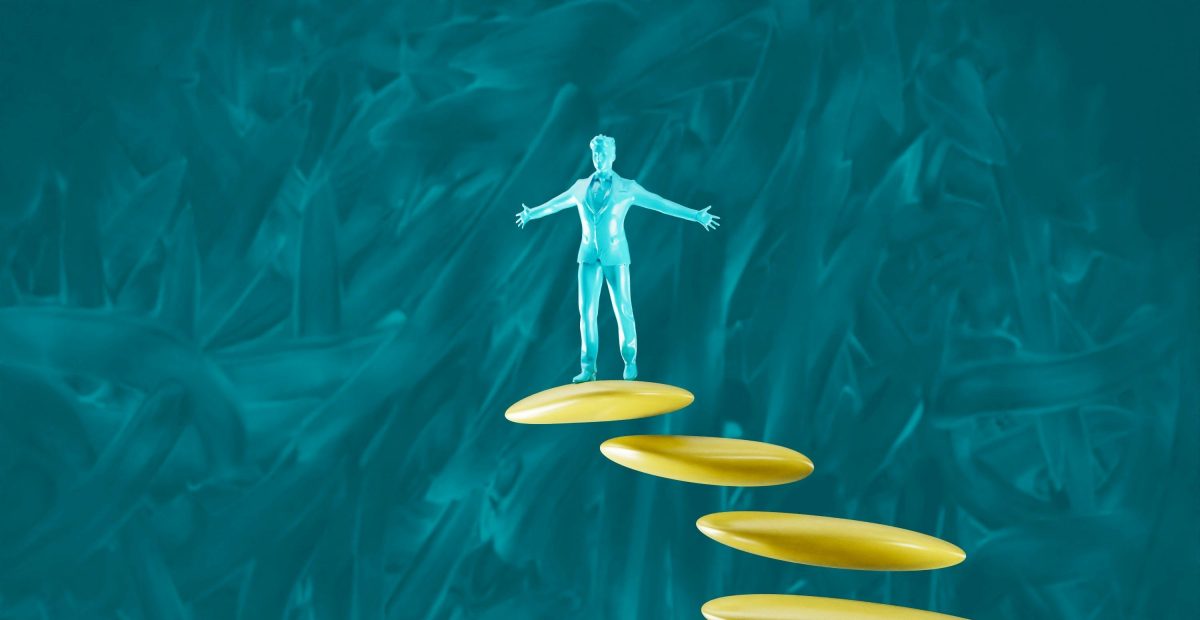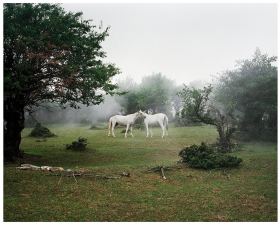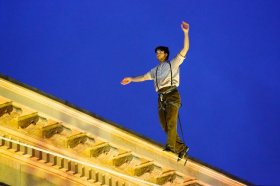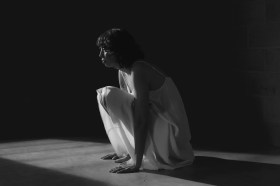I have a complicated relationship with festivals. I often get overwhelmed by the thought of so many things in quick succession. Almost as often, if I attempt to investigate attending, I find the websites confusing and difficult to navigate with very little useful access information. This is becoming the case less often, yet it still feels like the default and, like many disabled people, I have been conditioned to set my expectations low, so I’m less likely to be disappointed.
When I was invited along to Mona Foma (Museum of Old and New: Festival of Music and Art) as a disabled reviewer, the first thing I did was jump on its website to have a look at the program. What I saw was promising, easy to navigate with alt text image descriptions and very clear access information, complete with guidelines about noise and lighting levels and access provisions, including how to request them. It was one of those steps that may be invisible to those who don’t need it, but is important in making disabled people feel welcome and wanted.
An interesting point that comes up often when I talk to people about creating a welcoming environment for disabled arts audiences is the importance of providing information about things you don’t have. And this means explicitly stating when you cannot provide a particular form of access and how that may affect someone’s ability to appreciate an event or work. This allows disabled people to make informed choices about what they spend their time and energy on, and how they may put their own access provisions in place.
For me, if an exhibition is entirely visual and description can’t or isn’t being provided, I may make the informed choice to save my energy for something else. It doesn’t mean I don’t think it isn’t worth accessing, just that sometimes the effort of getting to a place, expending energy on navigation, wayfinding, interactions with the public, and then finding that there is little meaning or enjoyment to be gained from something, is usually draining and disheartening.
Happily, Mona Foma was, for the most part, a highly sensory experience. I spent a weekend walking, feeling, listening, tasting, talking, touching, smelling my way through wild, wonderful and thought-provoking experiences.
The audio described performance of ANITO – lead artist Justin Talplacido Shoulder – was one of those theatre experiences that I struggle to put into words. After a tactile experience of some of the sets and props I was intrigued, but still not entirely sure of what to expect. It was the sort of experience that is vastly enhanced by the opportunity for a tactile experience. The way the performance was designed, the way it lived and breathed was not something that could have been successfully conveyed through description alone. To be able to put my hands on things and feel how they move, what they’re made of, is a singular opportunity.
In blind and low vision communities and particularly arts spaces, we talk about being inventive with access, trying to creatively embed access provisions and present them in new and exciting ways. This approach is fantastic and just supports the idea that access does not get in the way of art, but enhances it. This being said, sometimes the best way to lose yourself in an artwork is to be given the correct context. If that context is created simply through a pre-show tactile tour and traditional audio description through a headset, that is perfectly acceptable.
What that doesn’t mean is that you don’t need to think about making access part of the experience from the beginning and giving it the best chance to succeed and shine where it needs to.
ANITO was part performance, part installation. The aforementioned living, breathing set pieces were as much a part of the experience as the performers themselves. As were the lighting and sound design. At several points the live sound design was so loud, so alive, that it felt as if the entire room was breaking apart. As immersive and interesting as this was, the downside was that even with the volume turned as high as it would possibly go, I could not hear the audio description. This meant my mind was yanked straight out of where it was supposed to be immersed in the world and I was thinking more about how frustrating a lack of access is and wondering what I was missing.
It is extremely commendable to hire a describer, make time for a tactile tour, and buy the correct equipment to ensure that audio description can happen. But that all falls apart if basic tech things aren’t tested. It always comes back to access not being a “one and done” situation. It evolves and requires different things for every show, every experience. It is absolutely marvellous that the Theatre Royal in Hobart now has the capacity to hire an audio describer, because they have the capability to transmit live descriptions to members of the audience. But every situation is different and hoping for the best on the day just doesn’t cut it with disabled audiences anymore. Like anything else, it needs to be tested and retested, and adjusted as necessary.
The parts of the show when I could hear the description were fabulous. The word “visceral” was the thing that kept coming into my head. I couldn’t explain to you exactly what the show was about, but I felt it in my body. I don’t know if I would have understood more on an intellectual level if I’d had the opportunity to hear all of the description and access the performance more fully. That will remain a mystery. But it makes my heart glad to know that there are performances such as this one that are being made accessible to blind and low vision audiences. That, as a society, we are moving away from the assumption that anybody has a right to know or decide what disabled audiences may be interested in seeing.
Read: How to create exciting and accessible tactile tours
In the not-too distant past, and in some contexts to this day, the decision would have been made for us. A performance relying so heavily on visuals with no dialogue would be deemed uninteresting to a blind or low vision audience, so why bother providing access? It is fantastic to see curators, programmers and artists begin to reject this way of thinking.
This attitude was also evident in BOATS by Emeka Ogboh. A gin tasting at 11 in the morning is enough to immerse anybody in an experience. But being invited to have artworks, in this case photography, described live by somebody with knowledge of the art and passion about description, access and language was delightful. Having live description means you can take time and ask questions. Whether it’s about the art, the presentation space or really tiny details about colour or composition that may fascinate you, but be completely boring to somebody else.
As I move further and further along my journey as a disability arts activist, access consultant and artist, I’m continually experiencing new and different art, learning and being asked new questions about how to do access, especially blind and low vision access, the right way. What I always knew on some level, and am coming to realise more and more, is that there is no one answer to this question. Access is not prescriptive, it is not one-size-fits-all, and it is not an agreement that disabled people will always take up every access opportunity just because it is there. It is an offering. A very personal thing, because art is a very personal thing and so is disability. The more offerings we are extended, the more choices we can make.
The more art we can access, the richer our lives become. Accessibility looks different for every show, every artwork, every experience. And when organisations like Mona and their associated festivals keep showing up, inviting people in, seeking an acting upon feedback and striving to do better, we will keep moving in the right direction.





